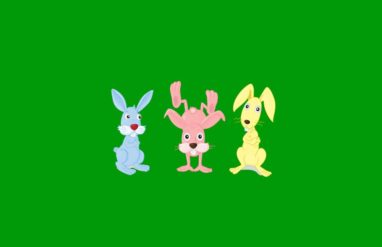When the leaves change and we head into fall, you’ll notice some common pieces of autumnal decor that pop up across houses: pumpkins, bales of hay, and scarecrows to keep away ominous black birds. But are these ravens or crows that we’re traditionally guarding against? Or are those just two names for the same type of bird? Let’s take a closer look.
What is a crow?
A crow is “any of several large oscine birds of the genus Corvus, of the family Corvidae.” The American crow, otherwise known as C. brachyrhynchos, of North America, measures about 17 inches and has a tail that resembles a fan when spread out.
The word crow‘s first recorded use dates back before 900, and it originates from the Middle English crowe. It’s similar to the Dutch kraai and German Krähe. Idioms for crow include “as the crow flies” (which refers to the most direct route), and “eat crow” (which means to admit that you were wrong or suffer self-humiliation as by retracting an emphatic statement). We wonder which crow regretted its eating habits so much to garner this phrase.
What is a raven?
As an adjective, raven refers to a lustrous black color. But as a noun, a raven is also any of several larger birds of the genus Corvus, of the family Corvidae. These corvine birds typically have a lustrous, black plumage with a pointed, wedge-like tail and a loud, harsh call that is distinct from a crow. The common raven, otherwise known as Corvus corax, has a wider wingspan in addition to its larger overall size and a thicker bill.
Raven‘s first recorded use dates back before 900. It stems from the Old English hrǣfn and is related to the German Rabe.
How to tell crows and ravens apart?
Although both of these black birds look similar and can be found across North America, they can be easy to tell apart when you know what to look for. According to the National Audubon Society, crows are smaller and tend to travel in large groups, while ravens are larger in size but often fly only in pairs. Another tell-tale (or is it tail?) sign is their feathers: a crow’s tail feathers are the same length, so they look like a fan, whereas a raven’s longer middle feathers give its tail a wedge or pointed look. Lastly, listen to the noise they produce. When a crow calls, it sounds like a distinct, high-pitched caw. Ravens on the other hand make a deeper noise that sounds like croaking.
If you’re able to get a closer look, you’ll notice that ravens appear to have a shaggy throat compared to a crow’s sleek neckline.
How would you use these words in sentences? Take a look:
- The crow‘s cawing lasted into the night and drove her crazy as she tried to sleep.
- He was surprised to see how big the raven looked up close, sitting on the branch just a few feet away from him.
- The raven flew away, calling out loudly as it reached the treetops.
- The two had been dating only a few weeks but were as inseparable as a pair of ravens.
- I thought the bird was a crow, but as I examined its shaggy throat, I realized it was a raven.
Now, can we discuss how a raven is like a writing desk?
















